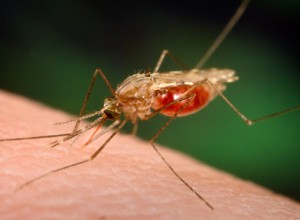Malaria responsible for 90% of one million deaths in Africa
 Malaria is said to constitute 90 per cent of the one million deaths in Africa while out of the global figure of 36 million deaths occurring.
Malaria is said to constitute 90 per cent of the one million deaths in Africa while out of the global figure of 36 million deaths occurring.
This was made known during the launch of a health booklet on: “Changing Disease Patterns in Africa,” on Wednesday in Accra by the Ghana Academy of Arts and Sciences (GAAS) to help inform policy makers on Africa’s double-burden of diseases.
The diseases burden in both communicable and non-communicable infections and ailments are said to be increasing in Africa due to the fact that the continent is going through socio-economic changes giving rise to a shift in disease pattern from predominantly communicable to non-communicable diseases (NCD).
Communicable disease like malaria is said to constitute 90 per cent of the one million deaths in Africa while out of the global figure of 36 million deaths occurring from NCDs like hypertension, diabetes, renal diseases, cancers and malnutrition-related diseases, 80 per cent occur in low and middle income countries including Africa.
GASS says the co-existence of a high burden of infectious diseases with an increasing prevalence of NCDs would pose a formidable challenge to Africa and addressing these health challenges in a timely and planned manner would avert and mitigate the possible dire health consequences that could emerge.
GASS has therefore developed the booklet, with six key messages to serve as a ready source of reference for policy makers who are seeking an integrated approach in health development.
Professor Isabella Quakyi, a Fellow of GASS who presented the highlights of the booklet said the changing diseases trends poses a formidable challenge on the already fragile health systems, that are not well equipped, and have inadequately trained personnel.
In the key messages, each African country has been urged to undertake a national assessment of the burden of communicable and the NCDs as well as develop estimates of how the country’s demographic and epidemiological transitions are likely to influence their long term trends.
Countries are also being urged to plan to avert and mitigate the dual communicable and NCD burden, create and enhance partnerships, mobilise resources for a healthy future, as well as continue to generate evidence base information to guide decisions.
The academies of Science are also being asked not to shirk the responsibility of being an ecumenical reliable platform for articulating science on the continent.
Prof Quakyi said since the booklet carefully describes the best options and states realistic recommendations for dealing with the issues, full implementation of the recommendations would place Africa back on the right path.
“Policy makers and other stakeholders are implored to use his booklet and not display on the bookshelves,” Prof Quakyi said.
Prof Akilagpa Sawyerr, President of GAAS said the booklet was an outcome from the cooperation between the Network of African Science Academies and the German National Academy of Sciences Leopoldina, which was funded by the German Federal Ministry of Education and Research.
He explained that African leading medical academics came together through their science academies to undertake an analysis of the negative consequences on the shift from predominantly communicable diseases profile to a situation of a dual burden situation out of which they formulated the series of recommendations for African governments.
He said there were many quality scientific capacity and quality scientists both in Ghana and many African countries who needed to be mobiles to work to address the situation.
He reiterated the need to pay attention to continues research, surveillance and resources to help control the dual-burden of diseases in Africa.
He called on the citizens of Africa to do regular things like exercising and regular check-ups to either avoid diseases or for early detection of any disease.
Source: GNA
